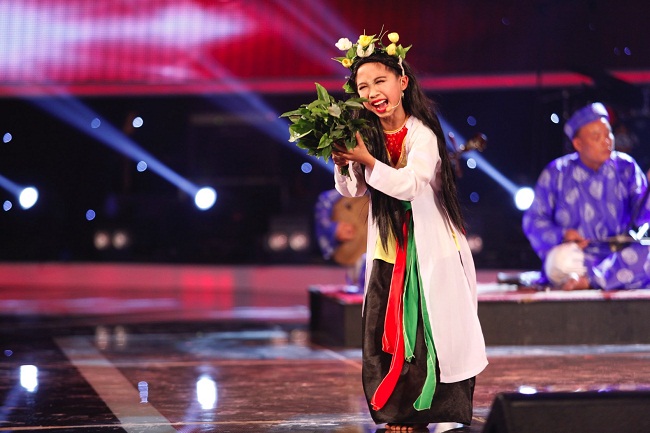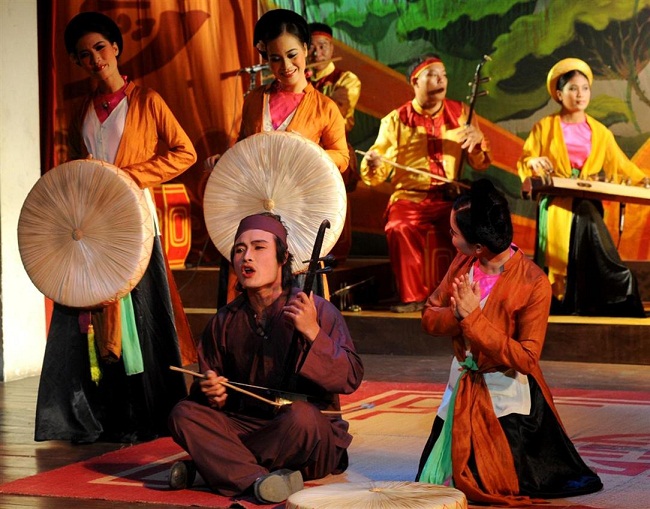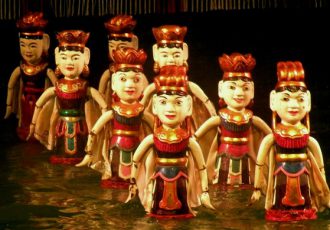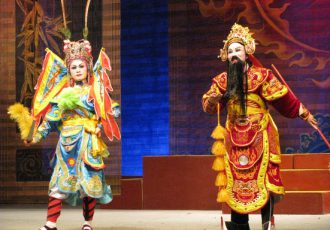The origin of Cheo in Vietnam
Cheo in Vietnam is a theatrical genre that is widespread in the middle and northern delta regions, especially during village festivals and fairs. Cheo, the popular theatre, was slowly built up under the Ly and the Tran from folk songs, dances and pantomimes, and established itself as a genre in the 15th century.

The variety of theatrical performance
Cheo performances take place in front of the Dinh or a Buddhist pagoda. The troupe, made up of actor-singers and musicians, moves from village to village; all the props are in a box which, along with a mat, is the only element of the set. Cheo Vietnam has a vast repertoire that leaves a lot of room for improvisation by the actors, and a troupe is judged on its ability to renew and update a known theme. The orchestra, which includes drums, gongs, rattles, two stringed instruments and a flute, sits at stage right. A spectator skilled in the art of Cheo beats a large drum reserved for the audience to signal the start of the play. When an actor plays or sings particularly well, one of the spectators hammers the drumhead, thus marking the general approval. If the audience judges the performance to be poor, the wood of the drum is struck.

The play begins with a series of drum rolls ending with three beats. At this point the orchestra plays the overture, during which the main actress introduces the plot of the play. The puplic knows all the rules of Cheo perfectly, which were defined as early as 1501. Throughout the play, the actors comment on the action, ask questions of the audience and the audience answers. Melodies known to all symbolise certain events such as marriage, birth and death. All the actors’ gestures, including eye and mouth movements, have a special meaning. The chorus and the jester, an omnipresent key figure, underline the dramatic moments. The jester (he), wearing black make-up, interrupts the players and comments on their actions, mocks them or praises their prowess. Often the audience will call out to an actor to ask him to replay a sequence or question him about a detail in the plot.
Cheo theatre is close to peasant life and carries the spirit of synthesis of agricultural culture, which is clearly revealed in the art of sounds and colours. Vietnamese cheo is also the most democratic form of popular theatre.



